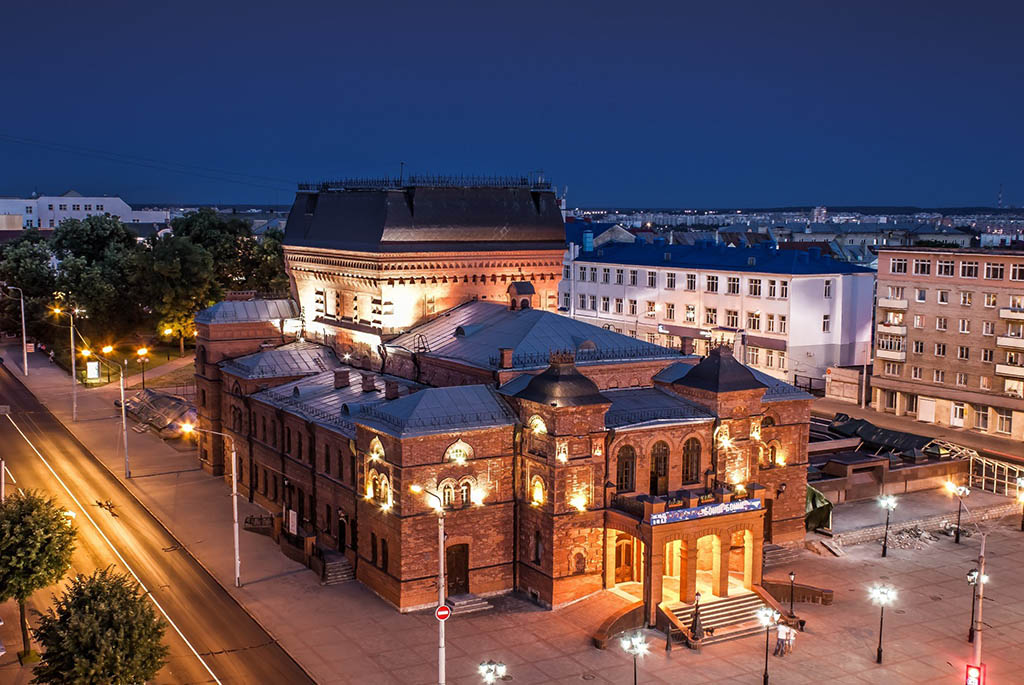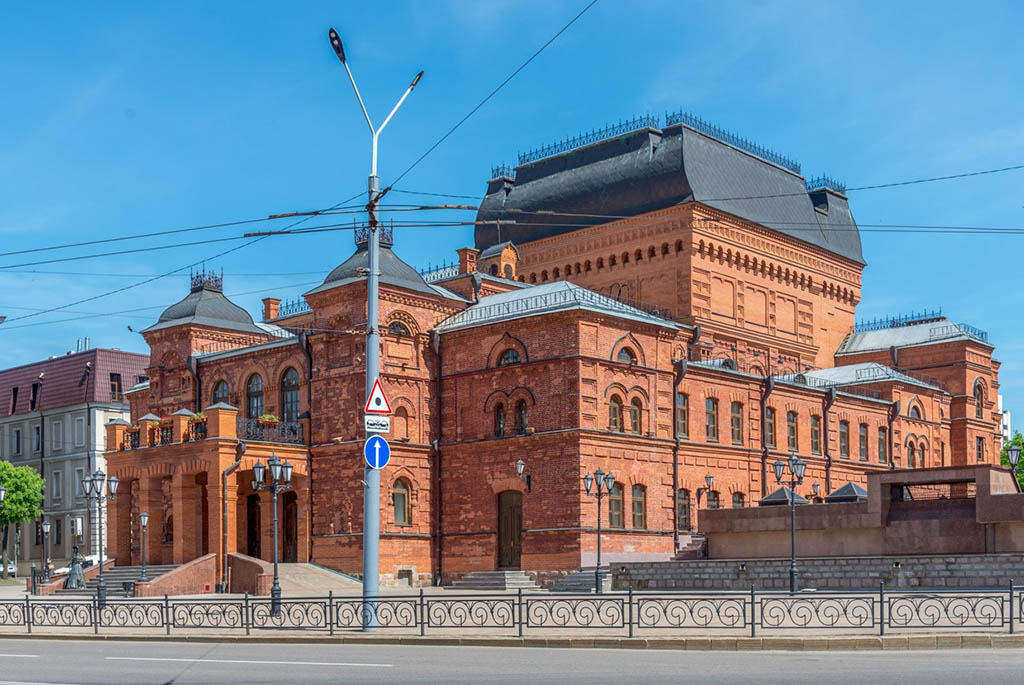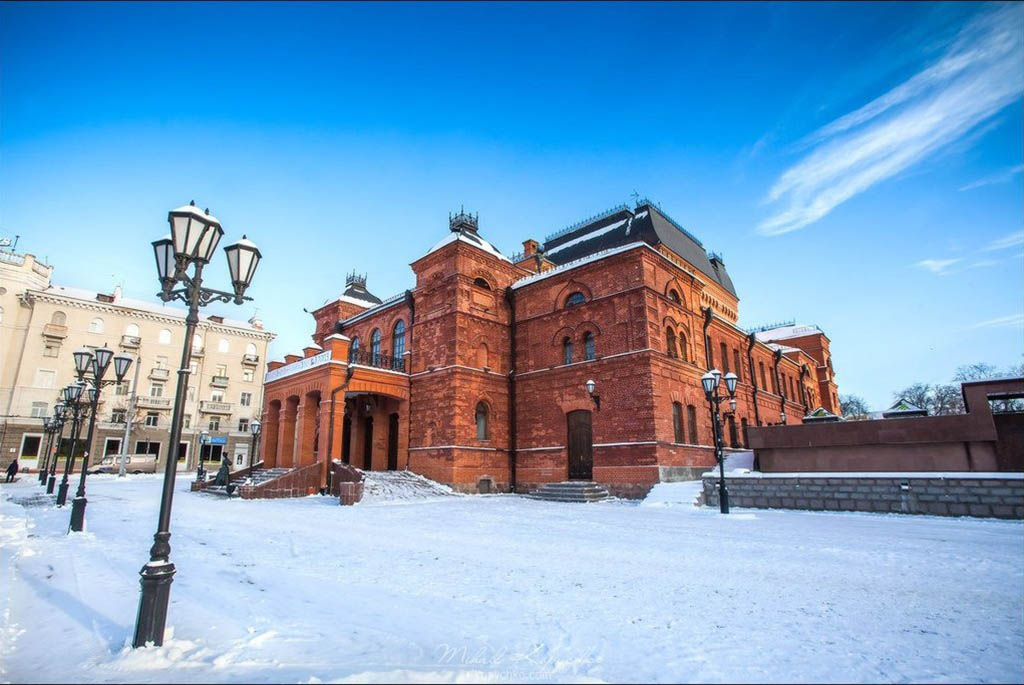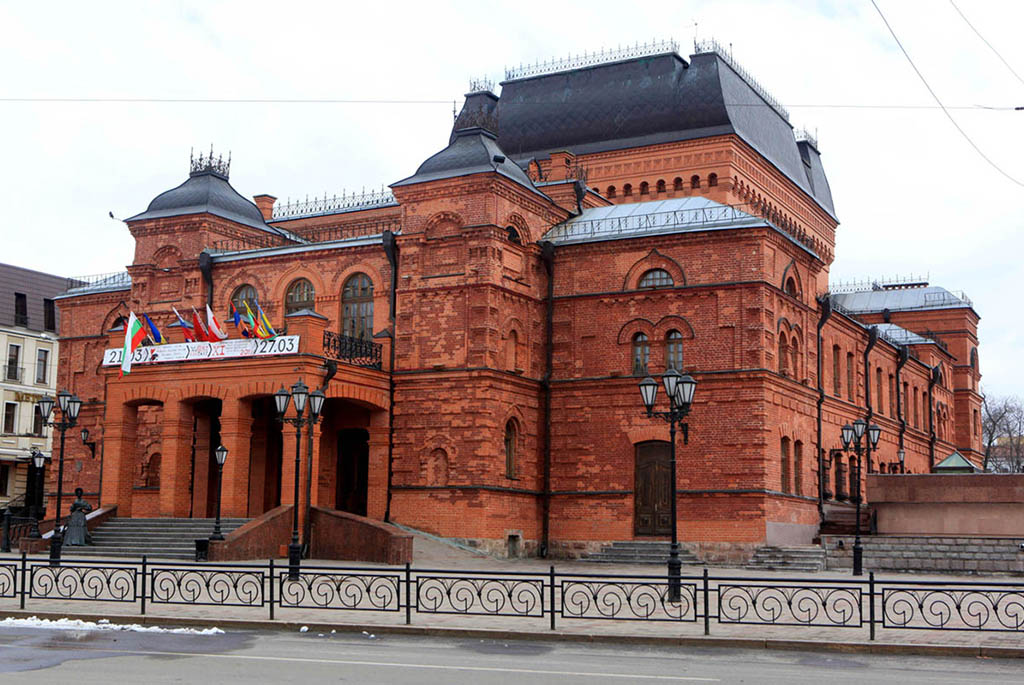Before this, plays were held in the streets, at fairs, and in the homes of the higher social classes. In the mid-19th century, the idea of creating a city theater matured among the Mogilev intelligentsia. With the governor's approval, fundraising began for the construction of the building.
People from all social strata – from students and teachers to merchants and military personnel – donated money for the construction. The architect from Mogilev, P. Kamburov, authored the project, and engineer V. Milyanovsky helped bring it to life. Construction work continued from 1886 to 1888.
The theater building was constructed on the site of former city fortress fortifications – at the intersection of Dneprovsky Prospekt (now Pervomayskaya Street) and Dvoryanskaya Street (now Komsomolskaya Street). It was a rectangular red brick structure with a facade decorated with two tower-like volumes. Between the towers, there was a balcony with porticos. The building's exterior decor was executed in the style of ancient Russian architecture, and its decorative elements were painted white. The design of the auditorium, which accommodated up to 500 spectators, was copied from the Small Theater in Warsaw. The boxes were decorated with wood carvings, and the ceiling was framed by artistic molding.
In the spring of 1888, the first performance took place in the building. The venue immediately became a favorite place for cultural recreation for the city's residents. On weekends, an orchestra played on the theater's veranda.
Famous cultural and art figures worked within the walls of the Mogilev Drama Theater – actors Vera Komissarzhevskaya and Fyodor Shmakov, singer Fyodor Shalyapin, composer Sergey Rachmaninov, and sculptor Petr Yatsyno. Among the visitors, Russian Emperor Nicholas II and Belarusian classics Y. Kolas and Y. Kupala were noted.
During the Great Patriotic War and for some time after the war, the theater building was abandoned. In the early 1950s, the Pinsk Regional Drama Theater moved here. Over time, the building deteriorated and fell into disrepair. The walls, interiors, and internal communications all required major repairs.
In the mid-1980s, the Ministry of Culture of the republic proposed to demolish the Mogilev theater and build a new modern building in its place. However, the city's residents defended this historical landmark. Instead of demolition, it was decided to restore the existing building. The restoration work took almost a decade – from the early 1990s to the early 2000s.
Restorers managed to preserve the theater hall's excellent acoustics, restore the historical appearance of the theater and its interiors. The wooden carving of the balconies, the ceiling moldings, and the upholstery of the seats – all elements were painstakingly recreated from existing photos and old drawings. The entrance to the theater was adorned with a bronze sculpture of a lady with a dog by V. Zhbankov.
Now, the Mogilev Drama Theater is a recognizable architectural monument of the city. For 135 years, the building has not lost its authenticity and the charm of the pre-revolutionary era. Performances, theater forums and festivals, and tours of foreign troupes are held here. The theater is located in the city center, and the "Dramteatr" public transport stop is nearby, through which more than ten bus routes pass.





